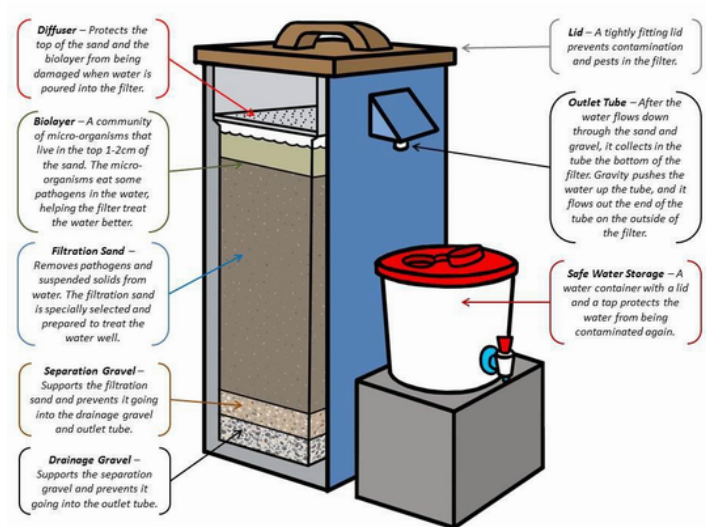A Simple Technology That Can Solve India’s Clean #Water Problem In Just Rs.3,000
Worldwide, around 10,000 people die every day due to lack of clean drinking water. The situation is alarming, but bio-sand filters offer a simple and affordable solution. This low cost model purifies water, is locally manufactured and can also help the local community with various livelihood options. And, all of that in just Rs.3,000! Read along to know how it is done.
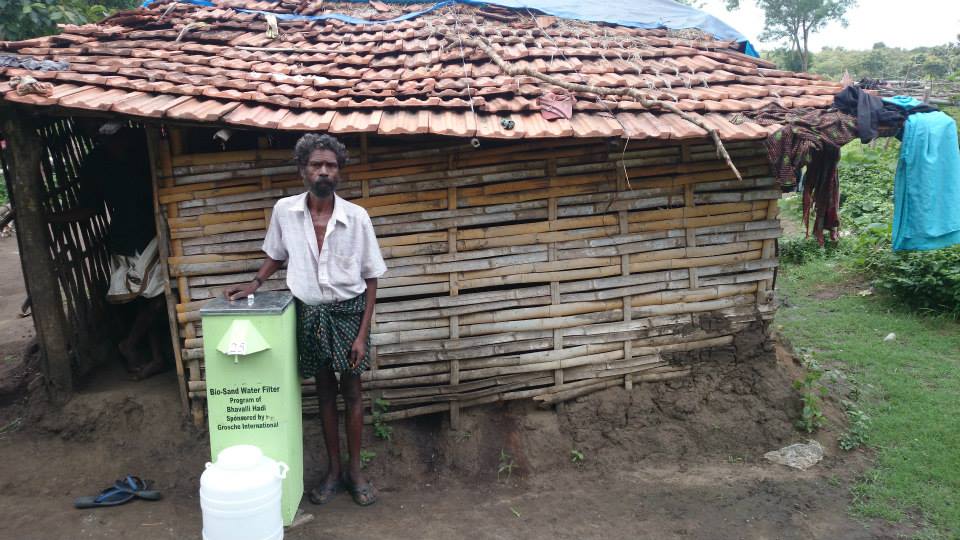
Worldwide, around 10,000 people die every day due to lack of clean drinking water. The situation is alarming, but bio-sand filters offer a simple and affordable solution. This low cost model purifies water, is locally manufactured and can also help the local community with various livelihood options. And, all of that in just Rs.3,000! Read along to know how it is done.
Water borne diseases are the number one cause of deaths worldwide, with WHO and CDC estimates pinning 3.5 million deaths every year to contaminated drinking water. In India alone, around 2,000 people die every day due to lack of clean drinking water, and out of these, children under the age of five are most vulnerable.
Most villagers consume unsafe drinking water on a daily basis. Some of these families opt for boiling the water prior to drinking which can be costly. Those who can afford it, buy bottled water to reduce the risks of such diseases, while economically and financially weaker people continue to consume impure water which eventually causes disease and death.
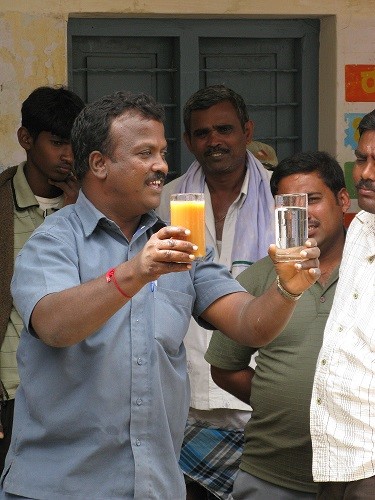
In dry regions like Rajasthan, we see a trail of women walking several kilometres just to get a bucket of water. And even that water is not potable by international standards. Don’t you think a necessity as basic as drinking water should be easier to avail? Isn’t clean drinking water a right, and not a privilege?
A Canadian scientist, Dr. David Manz, invented and designed an amazing tool that could solve this problem. He developed a low cost Bio-sand Water Filter that effectively removes all the dissolved particles and pathogens from the water. This slow purifying process manages to remove up to 98% of bacteria, 100% of viruses, 99% of parasites, protozoa, amoebae, and worms, 95% of heavy metals, and with a slight modification, 93% of arsenic. It manages to eliminate illnesses such as Typhoid, Cholera, Hepatitus A, Rotavirus, E-coli bacteria, and other dysentery causing organisms.

Tested and approved by various governments, healthcare institutions, and research departments, the bio-sand technology has effectively been introduced in over 66 countries. The low cost Bio-sand filter costs about Rs.3,000 and works for 30 years. It is easy to maintain and filters 84 litres of water daily, enough for 10-12 people, or 70 schoolchildren. There are no ongoing costs, no maintenance costs, and no electricity costs.
India definitely needed such a technique that could change the fate of thousands of lives in rural areas. A U.S. based couple Michael Lipman and Cathy Forsberg with Peace Corp and Rotary backgrounds started the South Asia Pure Water Initiative, Inc. (SAPWII) in Karnataka after receiving a start-up grant from a foundation in Connecticut in 2005.
When Shivani Kumar, India Country Representative of SAPWII, visited the rural areas to understand their issues, she was shocked to see the conditions that existed. She saw a pond where children were bathing and then drinking the same dirty water. In other parts of the country, she noticed people defecating in rivers and lakes, and using the same water source for drinking and cooking.
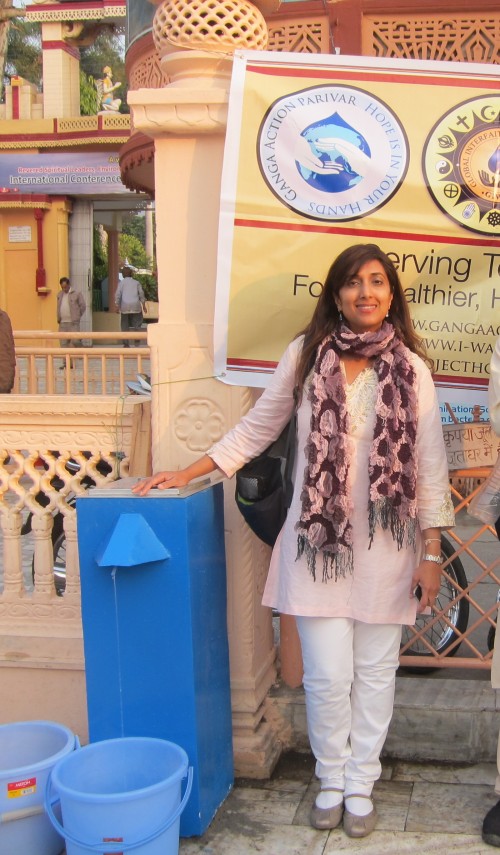
“This might be a common occurrence in villages, but it was painful for me to see and I knew I had to do something about it,” Kumar says. Having spent all her life in the U.S., Kumar was unable to accept the fact that clean drinking water was unavailable to thousands. She states, “After air, we need water. Water is Life.”
The technology was exactly what the country needed. Till date, SAPWII has distributed 12,000 filters, positively impacting 1,50,000 villagers. They run 5-day professional training programmes for NGOs and have developed a network across the country consisting of 90 NGOs in 22 states. Through the network, 25,000 filters have been distributed. “The way to spread this technology quicker and faster is through India’s NGOs. We still have a long way to go,” says Kumar.
How does it work?
The Bio-sand filter is made of locally available cement, sand and pebbles. It consists of various layers of sand and pebbles, and a 2-inch standing water layer known as the “bio-layer”. The dirty water is poured on top, and meets with the bio-layer where bacterial predation occurs. Then the water moves through the filtration sand and, because of an electrostatic charge, viruses adhere to the fine sand and are trapped within. This is known as adsorption. Furthermore, because there’s no food, no light, and no oxygen, further pathogen die-off takes place. The water then flows down into the pebbles and comes back up in an outlet tube, and is stored in a clean water container with a lid to protect it from re-contamination.
“It’s really a case of nature purifying nature. This simple, eco-friendly solution is found within nature itself. I still get amazed!” says Kumar.
To understand the technology better, take a look at this infographic-
NGOs work in different ways. Sometimes they sell the filter to an individual user who then maintains it. Sometimes a villager can receive microfinancing, while others are subsidized from their local NGO. It depends on which model works in a particular village. “The idea is to inculcate the sense of ownership amongst villagers. It should not be treated as charity. When villagers contribute even Rs. 500 towards their filter, they are more likely to value it.” Kumar says.
The challenge
“The biggest challenge has been to spread awareness among people about the importance of clean drinking water. They are accustomed to their lifestyle – even though they spend a lot of sick days, yet there’s a resistance to something new. But we are trying to change that through more awareness campaigns and with the help of media,” says Kumar. SAPWII also conducts sanitation and hygiene education since it is closely related to clean drinking water.
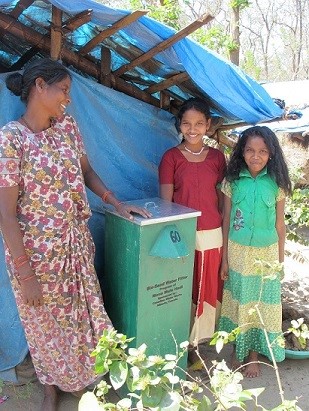
Another challenge of the Bio-sand filter is the heavy weight, especially in mountainous regions. However, mobile units can help address this issue. Plastic versions have their own limitations and don’t last as long, so concrete filters are still preferable.
Scaling up
SAPWII has shown a 300 percent growth this year alone, and demand for these filters is rising. They need more volunteers and training programmes to engage more people. They are also open to suitable partnerships which could help them leave a bigger impact.
“No one person or NGO can bring a change alone. We need to work collectively for the clean water cause, while keeping in mind the revival and sustenance of livelihoods of rural people”, says Kumar. SAPWII has invited professional trainers from Friendly Water for the World (FWFW) to train the NGO’s of India. They are also looking at fundraising to sustain their model.
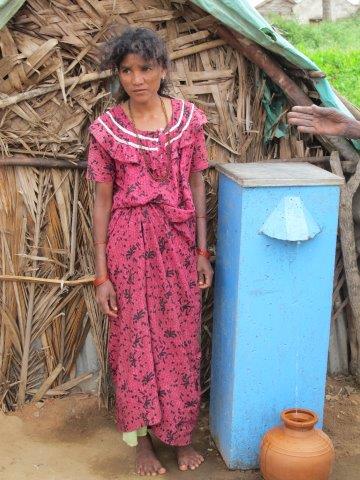
How you can help?
“Whenever you see a need, just jump in and do it,” Kumar says. Water is a basic necessity and everyone has the right to access clean drinking water. You can help the initiative by being a part of their training programmes, donating filters to a village through their Adopt-A-Village program, or just spreading awareness about the amazing technology that can change the lives of thousands of people in the country.
“The heart and soul of India lies in its villages. Come join our cause or whatever cause touches your heart,” Kumar says. Water is a basic necessity and everyone has the right to access clean drinking water. Let’s help people exercise this right.
SAPWII is conducting another training programme in Madhya Pradesh from October 9-13, 2014.
Like this story? Or have something to share? Write to us: [email protected], or connect with us on Facebook and Twitter (@thebetterindia)

Similar Story

Startup’s Innovation Could Help Millions Get Access to Better Brain Health At Home
Ivory, a pioneering age-tech startup founded by Issac John and Rahul Krishnan, aims to redefine the ageing experience by focusing on better brain health, through neuroscience-backed assessments, interactive games, and personalised solutions.
Read more >
If you found our stories insightful, informative, or even just enjoyable, we invite you to consider making a voluntary payment to support the work we do at The Better India. Your contribution helps us continue producing quality content that educates, inspires, and drives positive change.
Choose one of the payment options below for your contribution-
By paying for the stories you value, you directly contribute to sustaining our efforts focused on making a difference in the world. Together, let's ensure that impactful stories continue to be told and shared, enriching lives and communities alike.
Thank you for your support. Here are some frequently asked questions you might find helpful to know why you are contributing?


This story made me
-
97
-
121
-
89
-
167



